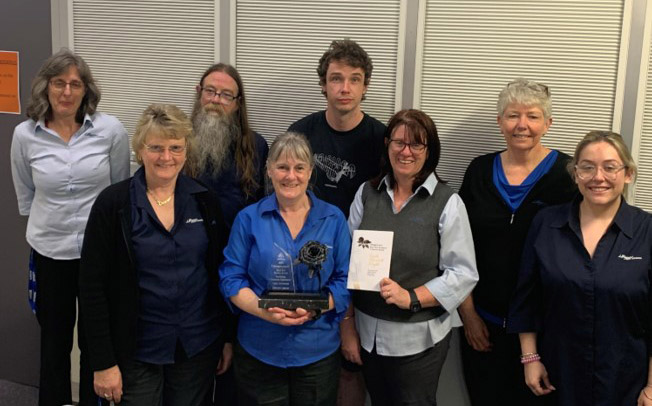We got an enquiry from a journalist this week that got us thinking about SLEDs (Sea Lion Exclusion Devices).
We’ve talked about SLEDs in The Update before. These clever additions to fishing nets in the squid fishery are an escape mechanism for sea lions that might otherwise be caught in the fishing gear. Since they were implemented by Deepwater Group in 2006, sea lion deaths caused by fishing have dropped dramatically.
For those of you unfamiliar with the technology, imagine a grate, a bit like lightweight cattle stop, that sits at an angle inside the net, covering the entire circumference. Above it is the escape hole. The fish go straight through the grate, but the sea lion is stopped by the grate and directed up through the hole, escaping the gear and swimming on to fish another day.
Over the past 20 years there has been significant investment in SLED development for the New Zealand Sea Lion and understanding the efficacy of these devices. SLEDs have been robustly tested by independent researchers and became a regulatory requirement for the Auckland Islands squid fishery (SQU6T) in 2022.
Unfortunately, there is a small group of people who do not accept the evidence. To a certain extent we get it – people feel passionately about marine mammals and they want to know everything possible is being done to keep them safe. Frankly, so do we.
But the data tells a good story. In the 2003/04 fishing year, before standardised SLEDs were introduced, there were an estimated 39 captures when targeting squid around the Auckland Islands. Last year, there were an estimated 2.6 captures (MPI reporting tells us there were in fact two reported captures – one with an observer on board and one without). The current five-year average, as reported by MPI, is 4.2 deaths.
Despite SLEDs being a massive success story, we still regularly hear from doubters suggesting a number of theories to explain their reluctance to accept the numbers.
Mostly they worry about cryptic mortality – deaths that might be happening but can’t be observed. They believe that some sea lions might get hurt as they interact with the SLED before swimming out the hole and die afterwards from exhaustion or injury. The risk of this has been tested and unobserved mortality rates as a result of fishery interactions has been determined by independent scientists. MPI includes these in their estimates, that’s why numbers are not always whole numbers as they are scaled up to allow for the possibility of unobserved deaths.
But just in case you’re still curious, here is one clear reason to trust the data. The squid fishery is heavily observed by independent Government observers. With observer coverage being above 80% in the SQU6T fishery over the past 10 years, we have high confidence in the fisheries data.
Many of you reading this will know all about SLEDs and similar devices (for seals and turtles) in other fisheries around the world. You will feel like there’s nothing new to be said here – the results are in and they work, not just in New Zealand (where we have developed the best version of these devices for our fishery) but in other jurisdictions such as Australia, North America and the Falkland Islands. Using SLEDs is global best practice.
One reason we are focused on them this week, is we hope this information helps those in our wider seafood whānau feel confident enough to speak to the success and importance of SLEDs. Another reason to talk about this now is it’s important to celebrate success and SLEDs are an example of that. Hard work was done to find the right formula for these. Different configurations were experimented with. All this happened many years ago and these efforts have saved many sea lion lives.
We want to thank the fishers on the water and the companies that fund and use SLED technology. If you’re SLEDing you don’t deserve sledging – you’re doing a great job.








